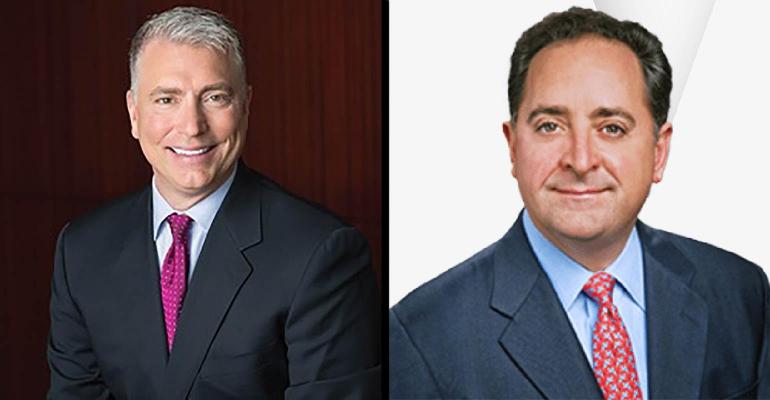Robert DeChellis, the former president and chief strategist for Allianz Exchange, and Frank Porcelli, the former head of U.S. wealth advisory for BlackRock, have launched a wealth management firm and technology platform that promises to help advisors take a wider, more "holistic" view of a client's financial situation, including a focus on managing risks and liabilities alongside accumulated assets.
The two have created Bonsai along with four other founding partners, including Dave Schrohe, former president of Lenox Wealth Advisors; Jeff Miller, former head of Advice and Platforms at UBS; Peter Cieszko, a former American Century exec; and Eric Hoerdemann, former partner with Stride Capital, a seeding firm based in Stamford, Conn.
Bonsai’s model is focused on delivering outcomes for clients and doing so by having purview over a client’s entire balance sheet, including assets and liabilities, DeChellis said, and putting products like annuities and insurance into the mix to mitigate risks.
“Everyone’s been focused on accumulating wealth and a return-driven model,” he said. “Ours is predicated on more of an asset/liability model that takes the entirety of someone’s financial structure in order to do that.”
“It’s really far more comprehensive than anything we’ve seen in our industry because candidly the industry has not been compensated to do things like help people manage liabilities or forecasting or addressing things that are outside of, let’s say, the investable assets that they’re able to have managed by an advisor today.”
Bonsai consists of three offerings: Bonsai Exchange, Bonsai Advisors and Bonsai Consulting.
Bonsai Exchange is a portal targeted at registered investment advisors that will give them access to insurance products and annuities that address risks in a client balance sheet. They have partnered with major insurers, such as Allianz, Global Atlantic, Transamerica and AIG, to bring those products and have plans to add more partnerships in the future.
“The whole idea of the Exchange is to try to take as much friction out of the process as possible, because in a lot of ways advisors have viewed insurance-based products as very onerous, whether it’s the complexity, the pricing—commissions versus fee-based; historically they’ve been very manual. What we’ve tried to do with the Exchange is create a complete digital experience,” DeChellis said.
The Exchange will also include a business valuation tool, aimed at helping advisors with small-business clients get a wider purview into those clients’ balance sheets.
“By providing a business valuation tool for advisors, they actually can engage in a part of the conversation with a client; your typical financial planner doesn’t get involved in the nuts and bolts of a small business owner’s business,” DeChellis said.
Bonsai Advisors is the firm’s wealth management platform, which can be accessed in one of two ways. An advisor can join under Bonsai’s ADV and use its front-end platform, wealth management tech stack and the Exchange. The firm will also be marketing to advisors, especially insurance agents, who want to delegate wealth management functions.
The goal is to launch Bonsai Advisor via a handful of advisory firm acquisitions, targeting firms with $1 billion or lower in assets under management, DeChellis said. Then the firm will likely shift to a recruiting and organic growth model.
The third offering is Bonsai Consulting, in which the firm will provide consulting services to help organizations develop corporate strategy, as well as practice management coaching for advisors.
DeChellis said Bonsai hopes to bring downmarket the strategy that many people think is afforded only to family offices or ultra-high-net-worth individuals; taking into consideration the entirety of a client’s balance sheet is a more comprehensive approach to delivering financial advice, he argues. And it’s one where the advisor might not necessarily get paid.
“Not every activity and not everything you do is going to translate into some percentage on AUM that you’re going to be compensated for,” he said. “But if you actually take this approach—and I tell advisors this all the time—if you want to execute an asset/liability model, it’s mathematically impossible to do it unless you have the entirety of someone’s balance sheet.”
“We want to be able to help advisors establish a relationship with their clients where there is a level of trust and level of efficacy, where the client realizes the tremendous benefit of aggregating their assets, having them all in one place, with one philosophy and one approach.”





